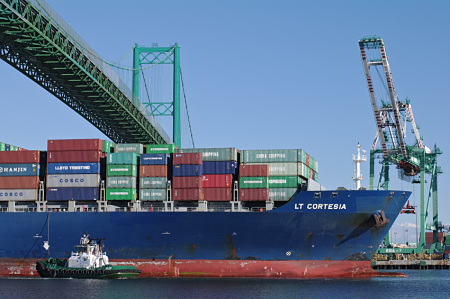Port disputes on West Coast impacting U.S. supply chain
Work slowdowns and a looming strike at West Coast ports is now having a ripple effect on the entire U.S. supply chain, according to a report in The World Property Journal.
“If the dispute is not resolved quickly, we will see significant ripple effects throughout our regional and national economies. In the short term, shippers will need to divert their cargo through other ports based on their individual supply chain models,” said Kurt Strasmann, senior managing director of the Port Logistics Group.
Strasmann told The World Property Journal that he doesn’t see a long-term impact because supply chain strategies are deeply rooted in the West and demand is too great for shippers to abandon West Coast ports.
According to the article, here are the major talking points on the West Coast ports situation:
- After nine months of negotiations, the Pacific Maritime Association (PMA) and the International Longshore and Warehouse Union (ILWU) have been unable to reach an agreement on a new labor contract, resulting in a significant slowdown at the 29 West Coast ports, which are currently running at approximately 50-60 percent capacity.
- The West Coast ports handle 44 percent of container cargo in the U.S. This activity accounts for 12.5 percent of U.S. GDP.
- Five West Coast ports—Los Angeles, Long Beach, Oakland, Tacoma and Seattle—are among the top 10 largest and busiest ports (by total TEU volume) in the U.S.
- The last labor-management dispute at the West Coast ports in 2002 resulted in a complete shutdown that lasted for 10 days and was estimated to cost the U.S. economy close to $1 billion per day. A 2015 lockout could cost the economy $2 billion per day.
- The immediate economic spillover has impacted both the trucking and rail industries that are closely tied to port activity and move a significant amount of cargo from the Coast to the center of the country.
- With more than 30 ships (and growing) waiting to dock at the Port of Los Angeles and Long Beach, the backlog for ships to unload their containers is 45-60 days and growing. As such, the supply chain implications will last well beyond the date of any agreement between labor and management.
- In response to the situation, retailers and manufacturers have been stockpiling inventory in warehouses, moving goods by air and shifting some shipments to East and Gulf Coast ports. This movement of goods has put significant stress on the “just in time” inventory scheme used by many supply chain networks and has added significant costs.
- The immediate impact on industrial real estate located near the West Coast ports will be minimal, but port markets on the East Coast like the Port of Miami, Houston and Savanah may see a short-term boost in warehousing demand as shippers shift cargo away from the West Coast gridlock.






